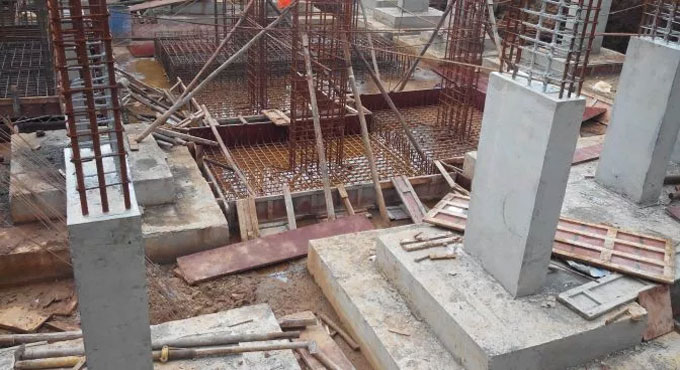
Some vital points to consider for your foundation design

Foundation provides support to the structure as well as transmit loads from the walls or columns of the building to the ground. The loads which generated from slab, beam, column, wall etc. should be transmitted securely to the ground. The substructure that is built up to transmit loads from the superstructure to the ground is called as a foundation.
Various types of foundations are available which can be utilized to develop your home. The task is not easy to choose the perfect foundation for your home. The selection of foundation is dependent on the following factors :-
01. Significance of the Building: As the significance of the building is enhanced, standard quality foundation system is essential.
02. Longevity of the Structure: Considering the longevity of the structure, there should be a foundation system devoid of any issue for the temporary structure so that any risk can be taken.
03. No. of Stories: If the numbers of stories are increased, there must be a strong foundation.
04. Loads from the Structure: The loads from the structure should be initially taken into consideration. There should be a mixture of dead loads and live loads on the buildings. On the basis of location, there are other types of loads like wind loads, snow loads, earthquake loads etc.
05. Materials of Constructions: Proper selection of material for construction like steel, masonry, and concrete construction is also very crucial for the foundation.
06. Types of adjacent structure: Adjacent structures also play an important role for choosing the perfect foundation for building. If the adjacent structure foundations are very close to the boundary line it can influence the foundation type.
07. Types of Foundations: Depending on the soil and loads from the structures, there exist several types of foundation like wall footings, combined footings, raft footings, combined footings, isolated footings, strip footings etc.
08. Water Table Level: Foundation system is also impacted by the depth of water table. Generally foundation is supported on either completely dry soil or wet soil. But if alternate drying and wetting happens in a layer, it should not be considered.
09. Location of Building: Location of building relating to natural disaster zones like the earthquake, cyclone, flood, volcano is also very important for foundation. The foundation is built up taking into consideration the fact whether the building is located in a region that is extremely susceptible to earthquake, cyclone, flood etc. Special preparation should have been made for them.
10. Type of Soils: Foundation is also based on various types of soils like sandy soil, loose soil, clayey soil or expansive soils etc. The soil adjacent to the soil surface is known as topsoil and 300 mm depth from the surface is known as subsoil. These subsoils are suitable for creating the foundation of small buildings.
Soil investigation should be accomplished to identify the water table level, type of soil, nature of the soil, depth of different layers of soil as well as the safe bearing capacity of the soil at various levels.
When the load is transmitted from the structure to the soil via the foundation, the soil takes care of mixing the soil resulting settlement of foundation system. The settlement of foundation induces cracks in structure and the structure may fall down in case of large settlement.


